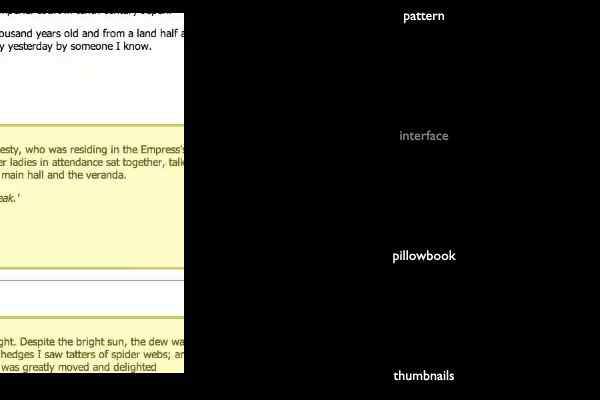In the final k-film projects you have the freedom to design an interface to your own delights. However, keep in mind that some basic principles of good design still apply (just as when making a film you might be able to write your own script and storyboard and film it however you like, but basic compositional rules about good framing and composition remain). While you are not design students, your teachers can give a lot of feedback around these elements of your project – and as an interactive work the interface is a fundamental part of the experience of your project.
More formally, within your interfaces you can now experiment with:
- background – think about using a different colour to black. Or perhaps a photo? How? Why?
- Korsakow supports a continuous background soundtrack, do you want to use one? How? Why?
- how many thumbnails do you want to use? Why? (Imagine a wall of thumbnails, perhaps a link to a template that is only thumbnails…)
- should you use video thumbnails? Perhaps at a different frame speed (imagine 1 frame per second so they sort of stutter). Should the video in the thumbnails have sound? Why? How could I use this? Imagine an interface that is only video thumbnails.
These are some of the elements that make up your palette (or tool box) for your projects. Each provides choice but that also means decisions that affect how you can think about your work and how others experience it. Good work chooses to work with a small set and for these things to make sense in relation to the project. What I mean by that is you don’t use everything just because you can. That is like using every visual effect possible in edits because they are there. This looks bad, and comes across as, well, lacking the ability to judge and express discernment. You fade because a fade is good here, it works. You dissolve for similar reasons. But if you cut here, dissolve there, fade next, barn door wipe after that, iris in the next time. Well, already it will look and feel like a software demo, and not a film. Same with your interface. Just because you can use everything usually doesn’t mean you should.
You can also edit the index.html file, after all it is just a html page. If you open it in an editor there are things there that you shouldn’t change, otherwise the project will break, but you can easily add text or edit the existing text. Perhaps add the title of the work here? A copyright notice? Something else?
Finally, include a credit screen or sequence in your project. It might be the opening film (which should be a jpeg, unless you nominate a video clip as a start film). This is where you can also show the title of the work, and the names of the people who made it. These works will be viewed by others, not just your classmates, so have your name on there, let people know it is yours.
